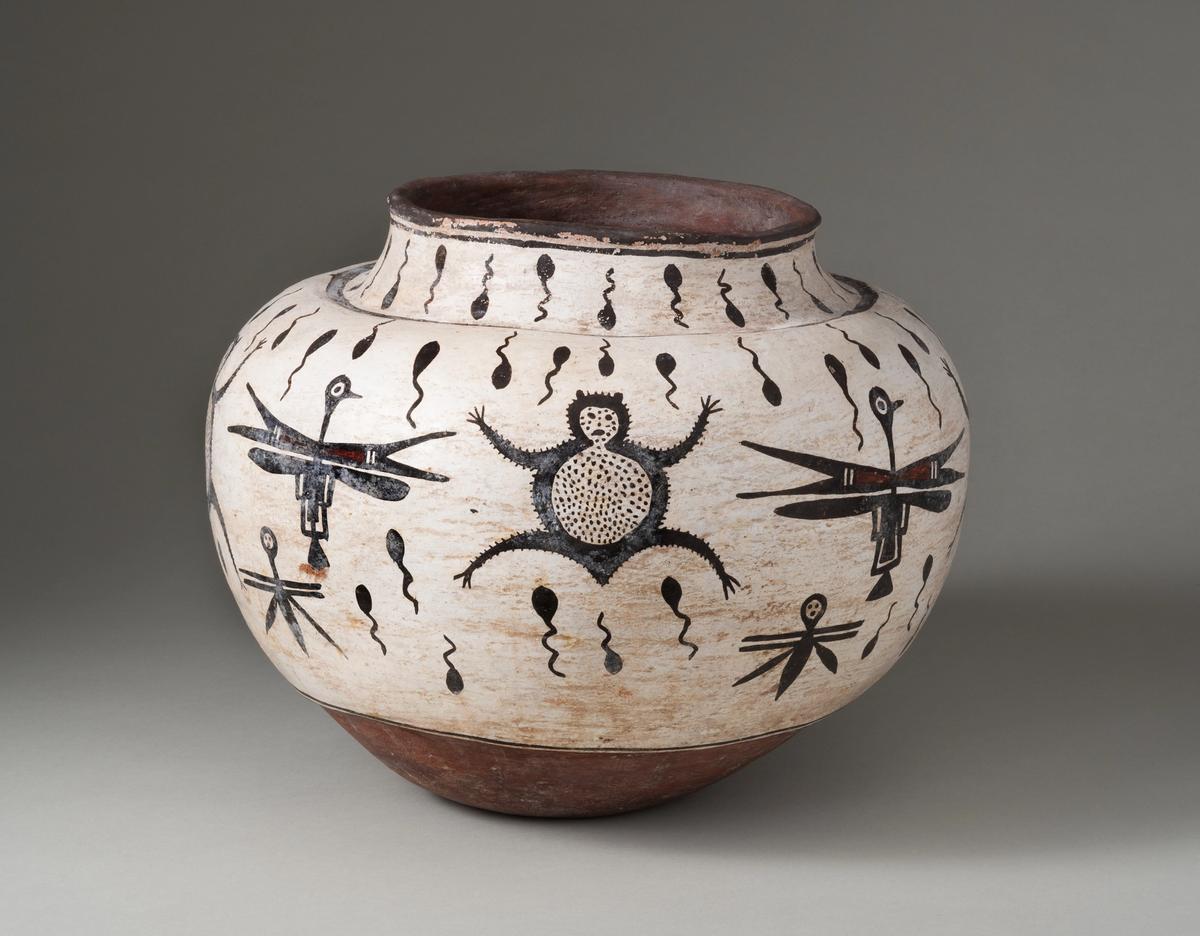Nearly 100 pieces from the Barnes Foundation’s collection of Indigenous objects are being foregrounded in an exhibition that examines this previously understudied part of the collection, which Albert C. Barnes amassed during three visits to the Southwest between 1930 and 1931. The show, Water, Wind, Breath: Southwest Native Art in Community (until 15 May), includes painted pottery vessels, hand-woven textiles and jewelry from the collection, and aims to bolster its founder’s progressive vision in the foundation’s centennial year.
Barnes’s short and non-linear collecting spree of Indigenous objects began when he traveled to the Southwest after selling his pharmaceutical business in 1929, on the recommendation that his wife’s respiratory condition could benefit from the high-desert climate. In Santa Fe and Taos in New Mexico, the couple was hosted by the arts patron Mabel Evans Dodge, a New York socialite who had established an artist colony in the state after a series of mystic prophecies had beckoned her to “save” Native culture, according to her memoirs.
Dodge’s colony, which hosted Native and non-Native artists and writers like Edward Weston and D.H. Lawrence, held salon-style gatherings to discuss Native land rights and religious freedom, during a time when ceremonial dances such as the Pueblo Dance, some which involve the ingestion of peyote, were contested by the American government.
The Barneses’ stint with Dodge and her husband Tony Lujan, a Taos Pueblo Indian whom she met while he performed Native songs for tourists, sparked an intense interest in Native culture. Barnes attended Pueblo Indian dances in 1931 and, when he returned to Merion, Pennsylvania, where the foundation was established in 1922, he was inspired to install Indigenous objects from his travels alongside the European masterworks in his collection. He also urged members of his staff to travel to the Southwest and experience the Pueblo Dance.
In several letters, Barnes talks about the “colourful nature of the event and the sense of community that it fostered”, says Lucy Fowler Williams, who co-curated the exhibition with Tony Chavarria (Santa Clara Pueblo). “This event was very inspiring and moved him personally, perhaps in the same way African spirituals moved him when he was a young person. At the time, there was an influx of outsiders coming to the Southwest as a spiritual and artistic haven, and also a growing awareness that there could be a market for Native art.”
The Barnes collection of Indigenous artefefacts spans nearly 240 Indigenous objects in all, double the size of the foundation’s African art collection, comprising some functional artefacts but mostly works that were made to be sold to collectors. As a result, the collection may favour good design over cultural significance. “Although Barnes would have been attuned to what was happening politically in the news, his focus was on aesthetics,” says Williams. “He responded very easily to pottery and was drawn to pots that are particularly covered in design; he collected around 50 intricate water jars, and used most of these textiles in his home.”
Still, Barnes was “engaged, precise and careful” in his collecting and the works on view serve to convey the “untold histories underneath the works, both from an artistic and colonial perspective, whether or not Barnes had been aware of them”, Williams says. She adds that the show displays the collection with loaned works by contemporary Native artists, including a captivating woven blanket by Ramona Sakiestewa (Hopi), to help “further recognise that these important arts are continuing”.
- Water, Wind, Breath: Southwest Native Art in Community, until 15 May, the Barnes Foundation, Philadelphia, Pennsylvania


